
Articles
How To Store Sherry
Modified: January 5, 2024
Learn how to properly store sherry in this comprehensive guide. Our articles provide expert tips and advice for preserving the quality and flavor of your favorite sherry.
(Many of the links in this article redirect to a specific reviewed product. Your purchase of these products through affiliate links helps to generate commission for Storables.com, at no extra cost. Learn more)
Introduction
Welcome to the world of sherry, a fortified wine that has captivated taste buds for centuries. Whether you’re a sherry enthusiast or just starting to explore this unique wine, proper storage is essential to preserve its flavor and quality. In this article, we will guide you through the process of storing sherry to ensure that every sip is as delightful as the first.
Sherry is a versatile wine that originates from the Andalusia region of southern Spain. It comes in various styles, ranging from dry and crisp Fino to rich and sweet Pedro Ximénez. Each style offers a distinct flavor profile, making sherry a fascinating and complex wine to discover.
When it comes to storing sherry, it’s important to understand that this wine is delicate and susceptible to light, heat, and oxygen. Without proper storage conditions, its flavors can fade, and its aromas can become muted. To fully appreciate the nuances of sherry, it’s crucial to handle and store it with care.
Before diving into the details of storing sherry, let’s discuss the importance of choosing the right sherry for your taste preferences. With a wide range of styles available, selecting the sherry that suits your palate will ensure a delightful experience every time.
Key Takeaways:
- Proper storage is crucial for preserving the unique flavors and aromas of sherry. From choosing the right style to monitoring and rotating your collection, these practices ensure every sip is delightful.
- Whether storing unopened or opened bottles, maintaining a cool, dark location with consistent temperature and humidity levels is essential. Proper shelving, monitoring stock, and sharing the joy of sherry complete the delightful experience.
Read more: How To Store Store-Bought Bread
Understanding Sherry
Before we delve into the intricacies of storing sherry, let’s take a moment to understand the wine itself. Sherry is made from white grapes grown in the sunny vineyards of Spain’s Andalusia region. The unique production process involves fortification, oxidation, and aging, resulting in a wine with remarkable complexity and depth of flavor.
Sherry is known for its distinct characteristics, such as its nutty, fruity, and sometimes saline notes. The different styles of sherry range from bone-dry to intensely sweet, allowing for a wide spectrum of flavors to suit various tastes.
The main styles of sherry include Fino, Manzanilla, Amontillado, Oloroso, Palo Cortado, and Pedro Ximénez. Fino and Manzanilla are pale, dry sherries that pair well with seafood and lighter dishes. Amontillado and Oloroso are richer and more full-bodied, often enjoyed with savory dishes and cheeses. Palo Cortado combines the elegance of Amontillado with the depth of Oloroso, while Pedro Ximénez is a lusciously sweet sherry, often served as a dessert accompaniment or poured over ice cream.
Now that we have a basic understanding of sherry, let’s move on to the next crucial step in enjoying this extraordinary wine – choosing the right sherry for your taste preferences.
Choosing the Right Sherry
With the wide variety of sherry styles available, it’s important to choose the right one that aligns with your taste preferences. Here are a few tips to help you make an informed decision:
- Consider the sweetness level: Sherry ranges from bone-dry to intensely sweet. If you prefer a drier wine, opt for Fino or Manzanilla. For a richer and sweeter experience, go for Amontillado, Oloroso, Palo Cortado, or Pedro Ximénez.
- Think about the occasion: Different styles of sherry are well-suited for different occasions. Fino and Manzanilla are great choices for aperitifs, while Amontillado and Oloroso are excellent for pairing with meals. Pedro Ximénez is perfect as a dessert wine or for sipping on its own.
- Consider food pairing: Sherry is incredibly versatile when it comes to food pairing. Fino and Manzanilla complement seafood and light dishes, while Amontillado and Oloroso pair well with richer flavors like roasted meats and cheeses. Palo Cortado and Pedro Ximénez are ideal for chocolate-based desserts or strong cheeses.
- Experiment with different styles: Don’t be afraid to try different styles of sherry to discover your personal favorites. Each style offers a unique taste profile, and part of the joy of sherry is the exploration and discovery of new flavors.
When selecting sherry, pay attention to the label. Look for information on the style, such as Fino, Amontillado, or Pedro Ximénez, as well as the brand and the age. Older sherries tend to have more complexity, while younger ones have a fresher and more vibrant character.
Now that you have an understanding of the different sherry styles and how to choose the right one, let’s move on to the next crucial step – storing your sherry properly.
Storing Sherry: Basics
Proper storage is key to maintaining the quality and flavor of your sherry. Whether you have just purchased a bottle or opened one, following these basic guidelines will help you preserve the integrity of this unique wine:
1. Store sherry in a cool and dark place: Sherry is sensitive to heat and light, so it’s essential to store it in a cool, dark location. Avoid areas that are exposed to direct sunlight or temperature fluctuations, as they can negatively impact the wine’s flavor and aroma.
2. Maintain a consistent temperature: Ideally, store sherry between 10°C and 15°C (50°F and 59°F). Fluctuations in temperature can cause the wine to expand and contract, potentially leading to leakage or spoilage. It’s best to avoid storing sherry in areas prone to extreme temperature changes, such as attics or basements.
3. Control humidity levels: Sherry is best stored in an environment with moderate humidity, around 60-70%. High humidity can promote mold growth and damage the labels, while low humidity can dry out the corks and lead to oxidation. If the humidity levels are too high in your storage area, consider using a dehumidifier.
4. Keep bottles upright: Unlike still wines, sherry does not benefit from being stored horizontally. The high alcohol content in sherry prevents the wine from coming into contact with the cork, reducing the risk of cork spoilage and leakage. Storing the bottles upright also helps with easier identification and prevents sediment from settling.
5. Prevent bottle vibration: Sherry is best stored in a location where it won’t be subject to frequent vibrations. Vibrations can disturb the sediment in the bottle and affect the wine’s clarity. Choose a stable and vibration-free spot or consider using a vibration-dampening wine rack.
6. Avoid strong odors: Sherry can absorb odors from its surroundings, so it’s important to avoid storing it near strong-smelling substances, such as cleaning products or spices. Odor contamination can alter the delicate flavors of the wine and diminish the overall experience.
Following these basic guidelines will ensure that your sherry remains in optimal condition. Now, let’s explore more specific aspects of storing sherry, such as selecting the ideal storage location and proper shelving techniques.
Selecting the Ideal Storage Location
When it comes to storing sherry, selecting the right storage location is crucial for maintaining its quality and flavor. Here are some factors to consider:
1. Choose a cool and dark area: Find a storage location that is consistently cool and free from sunlight. Heat and direct light can negatively affect the flavors and aromas of sherry, so it’s best to avoid areas like kitchens or near windows. Consider a basement, cellar, or cool closet as potential storage spots.
2. Optimal temperature range: Sherry is best stored between 10°C and 15°C (50°F and 59°F). Avoid temperatures that are too high, as they can speed up wine aging and result in a loss of freshness. Fluctuating temperatures should also be avoided, as they can cause expansion and contraction of the liquid, potentially leading to leakage or spoilage.
3. Consistent humidity levels: Sherry should be stored in an environment with moderate humidity levels, around 60-70%. High humidity can lead to mold growth and label damage, while low humidity can dry out the corks, allowing air to seep into the bottle. Use a hygrometer to monitor humidity levels and make adjustments if necessary.
4. Good ventilation: Adequate ventilation is important to prevent mold growth and maintain air quality. Ensure that the storage location has proper airflow to keep the environment fresh and free from unpleasant odors. However, avoid excessive drafts, as they can accelerate evaporation.
5. Consider wine refrigerators or wine cellars: If you are a serious sherry enthusiast and have a significant collection, investing in a wine refrigerator or creating a wine cellar might be worth considering. These options provide precise temperature and humidity control, creating an ideal environment for storing and aging your sherry.
Remember, the key is to find a storage location that is consistent, cool, and dark, with the right humidity levels. By selecting the ideal storage location, you can ensure that your sherry remains in peak condition and delivers an exceptional drinking experience.
Now that you have a suitable storage location, let’s explore the importance of temperature control and humidity in preserving the quality of your sherry.
Read more: How To Store Basil From Store
Temperature Control and Humidity
Temperature control and humidity are crucial factors in storing sherry properly. Maintaining the right conditions will ensure that the wine ages gracefully and retains its flavors and aromas. Here’s what you need to know:
Temperature: Sherry should be stored at a consistent temperature between 10°C and 15°C (50°F and 59°F). Fluctuations in temperature can cause the wine to expand and contract, leading to potential leakage or spoilage. Avoid storing sherry in areas prone to extreme temperature changes, such as near appliances that emit heat. It’s best to choose a storage location that maintains a cool and stable temperature.
Humidity: Sherry requires moderate humidity levels of around 60-70%. High humidity can lead to mold growth, label damage, and deterioration of the cork. On the other hand, low humidity can dry out the cork, allowing air to seep into the bottle and causing the wine to oxidize. Use a hygrometer to monitor the humidity levels in the storage area. If the humidity is too high, consider using a dehumidifier or placing desiccant packs in the storage space to absorb excess moisture. If the humidity is too low, a humidifier can be used to increase moisture levels.
It’s important to note that maintaining a consistent temperature and humidity level is key. Fluctuations in either can have detrimental effects on the quality of the sherry. Rapid changes in temperature can cause the expansion and contraction of liquids, potentially leading to leakage or spoilage. Similarly, excessive humidity can promote mold growth, while low humidity can dry out corks and lead to oxidation.
Consider investing in a wine refrigerator or cellar, as they offer precise temperature and humidity control. These specialized storage options provide an ideal environment for aging and preserving your sherry collection. If you don’t have access to a dedicated wine storage solution, make sure to choose a suitable area in your home that meets the temperature and humidity requirements.
By controlling temperature and humidity, you can ensure that your sherry ages gracefully and retains its unique flavors and aromas. Up next, we’ll cover another important aspect of sherry storage – avoiding direct sunlight.
Store sherry in a cool, dark place, away from direct sunlight and heat sources. Once opened, reseal tightly and store in the refrigerator to maintain its flavor and quality.
Avoiding Direct Sunlight
One of the key enemies of sherry is direct sunlight. Exposure to sunlight can have a negative impact on the quality and longevity of the wine. Here’s why you should avoid storing sherry in direct sunlight:
1. Heat and temperature fluctuations: Sunlight can cause the temperature to rise significantly, causing rapid and extreme heat fluctuations. This can lead to premature aging and spoilage of the wine, resulting in diminished flavors and aromas. Heat can also cause expansion and contraction of the liquid, potentially leading to leaks or cracked bottles.
2. UV rays: Sunlight contains ultraviolet (UV) rays that can penetrate the bottle and interact with the wine. UV rays can degrade and break down the compounds responsible for the wine’s flavors and aromas, leading to a loss of complexity and nuance. This can result in a flat or dull-tasting sherry.
3. Oxidation: Exposure to sunlight can accelerate the oxidation process in sherry. Oxidation can lead to a loss of freshness, vibrant flavors, and aromas. The wine may become dull, lackluster, and develop off-putting aromas.
To prevent the damaging effects of direct sunlight, follow these precautions when storing your sherry:
1. Choose a dark storage location: Opt for a storage area that is shielded from direct sunlight. A cool, dark room, such as a cellar or closet, is ideal for storing your sherry collection. If you have a wine refrigerator or cellar, make sure it is placed away from any windows or areas with direct sunlight exposure.
2. Use tinted or opaque glass bottles: If you have the option, consider purchasing sherry bottles made of tinted or opaque glass. These bottles provide additional protection against UV rays, minimizing the potential for light-induced degradation.
3. Use UV-blocking wine bags or covers: If you have sherry bottles that come in clear or lightly colored glass, consider using UV-blocking wine bags or covers when storing them. These protective covers can help to shield the bottles from direct sunlight and minimize the effects of UV rays.
By taking these precautions, you can protect your sherry from the harmful effects of direct sunlight and preserve its flavor, aroma, and quality. Now that you know how to shield your sherry from sunlight, let’s move on to the importance of proper shelving and bottle positioning.
Proper Shelving and Positioning
When it comes to storing sherry, proper shelving and bottle positioning play a significant role in ensuring the wine remains in optimal condition. Here are some guidelines to follow:
1. Stability and support: Choose sturdy shelving or wine racks that can securely hold the weight of the bottles. Sherry bottles can be heavy, especially when stored in bulk. Make sure the shelves are not prone to sagging or tipping, as this can lead to breakage or damage to the bottles.
2. Horizontal storage for unopened bottles: While it’s common to store still wines horizontally to keep the cork moist, sherry is an exception. As sherry typically has a higher alcohol content, it doesn’t require direct contact with the cork. Store unopened sherry bottles upright to prevent the risk of leakage or spoilage and to maintain label visibility.
3. Bottle spacing: Ensure there is enough space between each bottle to prevent them from touching or knocking against each other. This reduces the risk of breakage and minimizes any disturbance of sediment that may have settled in the bottle.
4. Organization and labeling: Keep your sherry collection organized by grouping them according to style, brand, or vintage. This makes it easier to locate specific bottles and prevents unnecessary handling or movement of other bottles. Consider using labels or tags to identify each bottle to further streamline your collection.
5. Position away from vibrations: Avoid storing sherry bottles in areas prone to vibration, such as near appliances or heavy traffic areas. Vibrations can disturb the sediment in the bottle and impact the overall quality and clarity of the wine. Choose a location that offers stability and minimal vibration.
By following these shelving and positioning guidelines, you can safeguard your sherry collection and ensure that each bottle remains undisturbed and in optimal condition. Now, let’s move on to the importance of cork maintenance and bottle orientation.
Cork Maintenance and Bottle Orientation
Proper cork maintenance and bottle orientation are essential for preserving the quality and longevity of your sherry. Here are some guidelines to follow:
1. Inspect and maintain corks: Regularly inspect the corks of your sherry bottles for any signs of deterioration, such as dryness, mold, or leakage. If you notice any issues, consider recorking or decanting the wine into a new bottle to ensure its freshness and integrity. Properly maintained corks help to maintain a tight seal and prevent oxidation.
2. Store corked bottles horizontally (opened): If you have opened a bottle of sherry and plan to consume it over a longer period, store it horizontally. This helps to keep the wine in contact with the cork, preventing it from drying out and allowing for a better seal. Make sure the wine is stored away from direct sunlight and maintained at the proper temperature.
3. Use a wine stopper or vacuum sealer (opened): If you anticipate not finishing a bottle of sherry within a few days, consider using a wine stopper or vacuum sealer to remove excess air and create a tighter seal. This helps to slow down the oxidation process, prolonging the freshness and preserving the aromas and flavors of the wine.
4. Maintain consistency with oriëntation (opened): If you choose to store opened sherry bottles horizontally, ensure that you maintain consistency with bottle orientation. This prevents the wine from coming into direct contact with the cork if the bottle is frequently moved or flipped. Keeping the same side of the bottle facing upward will help establish a good seal and preserve the quality of the wine.
5. Store upright for long-term storage (unopened): For unopened sherry bottles that have a tight cork seal, it is recommended to store them upright. As sherry has a higher alcohol content, contact with the cork is not necessary, and storing upright helps to minimize the risk of potential leakage or spoilage. Ensure the bottles are kept in a cool, dark environment with stable temperatures.
By adhering to these guidelines for cork maintenance and bottle orientation, you can effectively preserve the flavor, aroma, and quality of your sherry for an extended period. Next, we’ll discuss the importance of monitoring and rotating your sherry stock to ensure optimal enjoyment.
Read more: How To Store Basil From Grocery Store
Monitoring and Rotating Stock
Monitoring and rotating your sherry stock is crucial for ensuring that each bottle is enjoyed at its optimal quality. Here are some tips to help you maintain a well-managed sherry collection:
1. Track purchase dates and vintages: Keep a record of the purchase dates and vintages of your sherry bottles. This will help you monitor how long each bottle has been in your collection and determine which ones should be consumed sooner rather than later. Sherry is best enjoyed within a certain timeframe, and tracking the age of each bottle will ensure that you drink them at their peak.
2. Keep an inventory: Maintain an inventory of your sherry collection, including details such as brand, style, vintage, and storage location. This will help you keep track of what you have and enable you to easily identify which bottles need to be consumed or rotated. You can use spreadsheet software or specialized wine cellar management apps for this purpose.
3. Rotate stock based on age: As sherry ages, the flavors and aromas undergo changes. To fully appreciate the evolving characteristics, it’s important to rotate your stock by consuming older bottles first. This ensures that you enjoy the bottles when they are at their prime and prevents any potential deterioration or loss of quality.
4. Sample regularly: Regularly sampling your sherry collection allows you to monitor the progression of flavors and aromas, especially in aged sherries. This helps you identify the optimum time to enjoy certain bottles and make informed decisions regarding which ones to consume or keep for further aging.
5. Share and enjoy: Sherry is a wine meant to be shared and enjoyed. Invite friends, family, or fellow sherry enthusiasts to join you in tasting and discussing the different styles and vintages. Sharing your sherry helps to create memorable experiences and ensures that your collection is appreciated and enjoyed to its fullest extent.
By monitoring and rotating your sherry stock, you can ensure that each bottle is consumed at its best, while also maintaining a well-managed collection. Just remember to keep track of purchase dates, rotate based on age, sample regularly, and share the joy of sherry with others.
Now that you have a comprehensive understanding of storing both unopened and opened sherry bottles, it’s time to wrap up this guide to proper sherry storage.
Storing Opened Sherry Bottles
Once you have opened a bottle of sherry, proper storage becomes even more crucial to maintain its freshness and quality. Here are some guidelines to help you store opened sherry bottles:
1. Re-seal the bottle tightly: After pouring the desired amount of sherry, make sure to re-seal the bottle tightly. This minimizes the contact with air and slows down the oxidization process. Use the original cork or a wine stopper to create a tight seal.
2. Store in a cool and dark place: Like unopened bottles, opened sherry bottles should be stored in a cool and dark area. Exposure to heat and direct sunlight can accelerate the deterioration of the wine’s flavors and aromas. Find a spot with a consistent temperature between 10°C and 15°C (50°F and 59°F) to maintain the quality of the sherry.
3. Use a wine refrigerator: If you anticipate keeping an opened bottle of sherry for an extended period, consider storing it in a wine refrigerator. These specialized refrigerators offer precise temperature control, ensuring that the sherry is kept at the optimal temperature for an extended period, allowing you to savor it over time.
4. Limit exposure to air: The introduction of oxygen is the primary factor that causes sherry to deteriorate. To minimize this, avoid opening the bottle unnecessarily and limit the time it remains open. The less time the wine is exposed to air, the longer it will retain its freshness and flavors.
5. Keep track of dates: Remember to mark the date when you opened the bottle on the label or keep a record of it. This will help you monitor how long the sherry has been open and enable you to consume it before it loses its optimal qualities.
It’s important to note that opened sherry bottles will have a shorter lifespan compared to unopened bottles. While sherry can last several weeks to months after opening, it’s typically best consumed within a few days to ensure the freshest experience.
By following these guidelines for storing opened sherry bottles, you can prolong the enjoyment of the wine and savor its flavors and aromas over time. Remember to re-seal the bottle tightly, store it in a cool place away from light, and limit the exposure to air.
Now, armed with a comprehensive understanding of proper sherry storage, you can confidently treat your sherry collection with care and enjoy this unique and delightful wine to the fullest.
Do you need assistance with anything else?
Conclusion
Proper storage is the key to preserving the quality, flavors, and aromas of your cherished sherry collection. Whether you are storing unopened bottles or opened ones, following the right techniques will ensure that each sip of sherry is as delightful as the first.
Understanding the different styles of sherry and selecting the right one for your taste preferences is the first step in building a collection that will bring you joy. From bone-dry Finos to sweet Pedro Ximénez, the world of sherry offers a diverse range of flavors to explore.
When it comes to storage, maintaining a cool and dark location with consistent temperature and humidity levels is essential. Avoid direct sunlight, which can affect the wine’s quality, and choose a stable storage area that allows for proper airflow and ventilation.
Proper shelving and positioning help protect your sherry bottles from damage and maintain their integrity. Storing unopened sherry bottles upright and keeping opened bottles re-sealed and well-maintained are essential practices to follow.
Monitoring and rotating your sherry stock ensures that each bottle is consumed at its optimal quality, allowing you to enjoy the evolving flavors and aromas. By keeping track of the age of your bottles and regularly sampling them, you can make informed choices about which ones to enjoy or age further.
Whether you’re a sherry connoisseur or just starting your journey, these storage practices will help you fully appreciate the unique and nuanced character of this fortified wine. Remember, sherry is meant to be shared and enjoyed, so be sure to invite others to taste and discover its wonders.
With the knowledge gained from this guide, you can confidently store your sherry collection, ensuring that it remains a source of delight for years to come.
Now, it’s time to savor the flavors of your sherry and continue exploring the diverse world of wine. Cheers!
Please let me know if there’s anything else I can assist you with.
Frequently Asked Questions about How To Store Sherry
Was this page helpful?
At Storables.com, we guarantee accurate and reliable information. Our content, validated by Expert Board Contributors, is crafted following stringent Editorial Policies. We're committed to providing you with well-researched, expert-backed insights for all your informational needs.








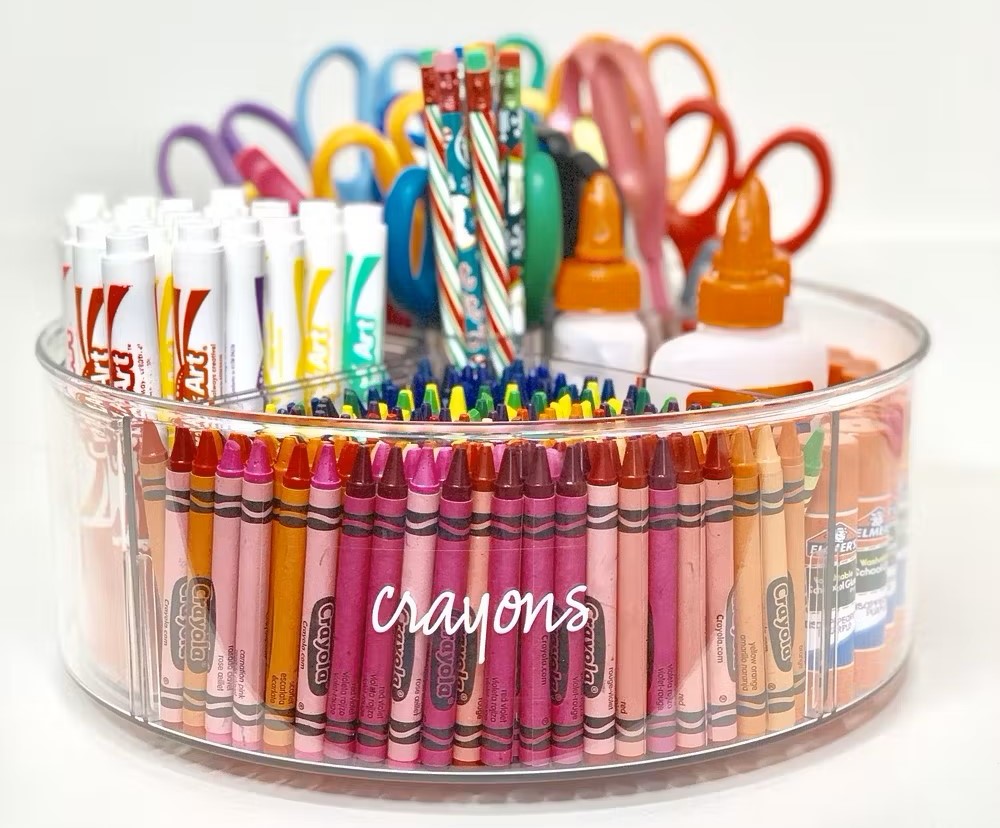

0 thoughts on “How To Store Sherry”